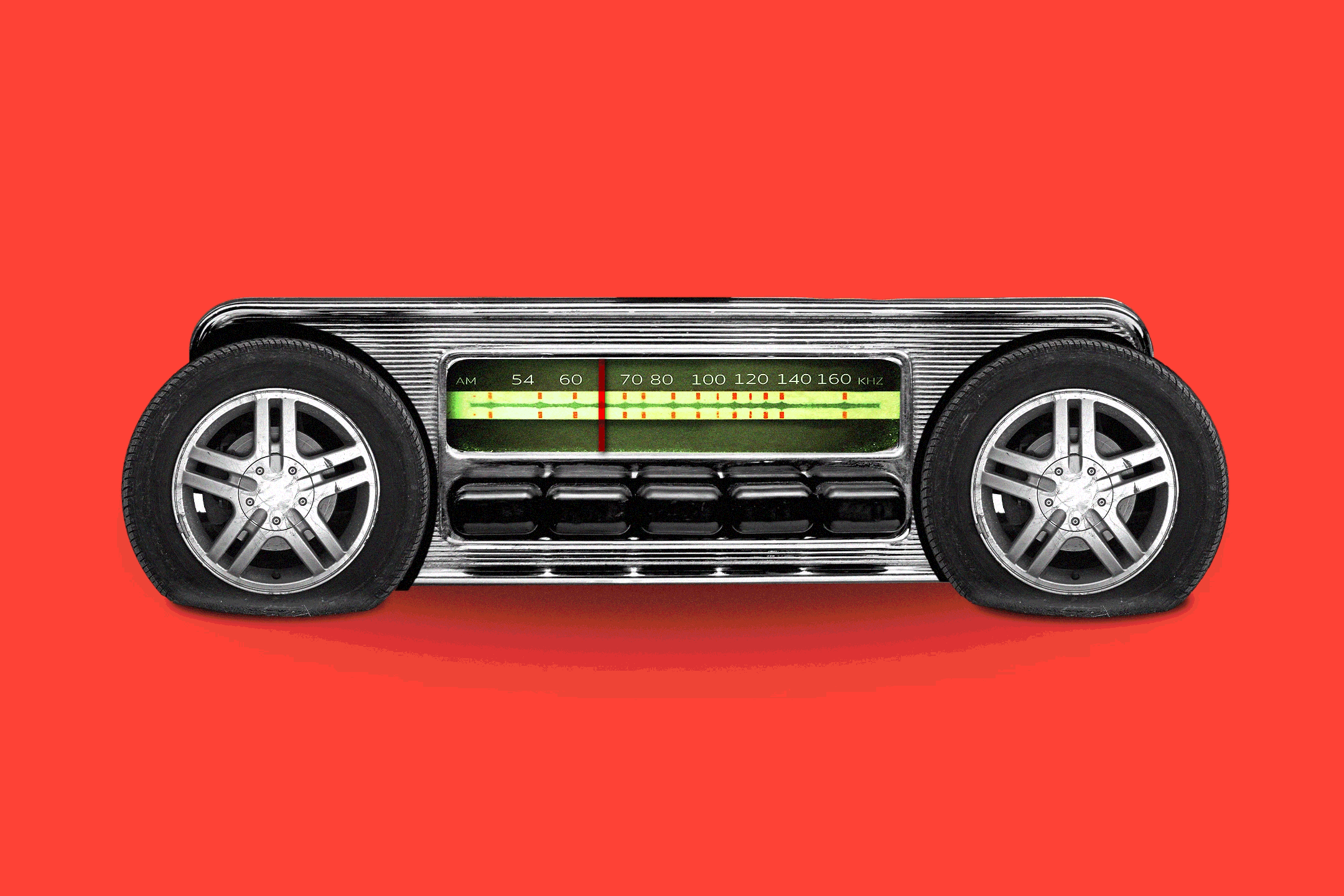High-Tech Radio Innovation Sparks an Industry Debate
- Share via
LAS VEGAS — A divisive debate is raging in the radio industry over a new type of high-tech broadcasting system that will provide compact-disc quality sound and allow nationwide channels for the first time.
Nearly everyone agrees that digital audio broadcasting (DAB), as the new technology is known, is so superior to existing AM and FM transmission that it will certainly be implemented, though probably not until late in the decade.
But just as the advanced TV known as high-definition television has been embroiled in a series of technical, political and economic controversies, digital audio broadcasting has also become the focus of a high-stakes battle that pits AM stations against FM stations, big stations against small ones and all traditional broadcasters against newcomers that propose to send radio signals by satellites.
Indeed, DAB over the past six months has become such a big concern among radio station operators around the country that it assumed much of the spotlight at the National Assn. of Broadcasters convention here last week--an event traditionally dominated by television broadcasters.
Like compact discs, DAB uses the ones and zeros of computer code to represent sound signals. By the end of the decade, consumers will be able to purchase a new type of radio, or an adapter for existing radios, and receive interference-free digital audio signals just about anywhere, even in the mountains or in a moving car.
Yet DAB poses a significant threat to many broadcasters, primarily because it provides an excellent method for sending radio signals by satellite. A Washington, D.C., company called Satellite CD Radio and several other firms have applied to the Federal Communication Commission for permission to launch radio satellites, which could beam signals from as many as 100 stations to radios nationwide.
While most local broadcasters have accepted the inevitability of satellite radio, they are eager to find a way to exploit DAB themselves and thus protect their franchise.
“Do I want 50 or 60 satellite signals delivered into my market? The answer is no,” says Walter E. May, an owner of local radio stations in Pikeville, Ky. “We could live with a limited number of satellite channels, but we need to see that our current system stays viable, that localism isn’t destroyed. Local advertising plays a very important part in our broadcasting system.”
DAB has also been greeted with mixed emotions by many FM broadcasters because it would eliminate the technological advantage they now have over their AM counterparts. Further, FM stations that are licensed to transmit very high-powered signals--and thus enjoy a very large listening area--would suddenly face a host of competitors boasting an equally good signal, noted Judith Gross, publisher of Digital Radio News.
As in the HDTV case, the different interests of the various segments of the radio industry have translated into a convoluted debate over technical standards for DAB. The National Assn. of Broadcasters, in an unusually aggressive move for a trade group, is backing the adoption of a European-developed DAB standard, but a group of big broadcasters led by Gannett Co. is working furiously on a completely different system.
“We’re trying to avoid a Beta-VHS-type fight between two standards,” says Alan Box, chairman of the NAB’s digital audio broadcasting task force. “We’re better off if we adopt a standard and let others adapt to that.”
The NAB is even negotiating for exclusive North American rights to the European system, which was developed under the auspices of the pan-European Eureka high-technology development program. But Box denies that the association is motivated by any financial considerations.
The Eureka system, as it is known, is further along technically than the competing proposals. But it would require the allocation of additional radio frequencies, which are scarce and much sought-after by purveyors of many different types of mobile communications services.
The alternative being developed by Gannett and the SRI International research laboratory would operate in the existing AM and FM spectrum bands--if it can be made to operate at all. Dubbed USA Digital Radio, the system was initially designed only for FM stations but is now being altered to accommodate AM as well.
USA Digital has informal backing from CBS Radio and Westinghouse Broadcasting, and the ability to operate in the existing spectrum is potentially a major advantage. But the system is still in the early stages of development, and its technical feasibility has not been entirely demonstrated.
Satellite CD Radio, for its part, has its own system, developed by Stanford Telecommunications Inc., which would also require new frequencies. Martin Rothblatt, chairman of Satellite CD Radio, expressed confidence that his system--which would distribute but not originate programming--would eventually gain the necessary regulatory approvals.
“Everyone has accepted the inevitability of this service,” he said, adding that in addition to carrying 100 national radio channels, his satellite service will also provide data channels for paging and other services. No one expects local radio to be completely eliminated, but the balance of power between local and national channels remains to be determined.
“I’m not anxious to see any satellite services, but we’re probably going to see some,” conceded the NAB’s Box. “The FCC seems intrigued with it.”
And consumers might also be intrigued with a radio service that allows them to drive long distances without changing the channel or listen to their favorite station anywhere in the country.
Tom Stanley, chief engineer at the FCC, said some decisions on the spectrum issue will be made in June as part of the agency’s recommendations on what positions the United States should adopt next year at a worldwide radio standards meeting. The Bush Administration opposes giving the NAB’s preferred frequencies to digital radio because they are now used for military flight-test communications.
A final decision on all the spectrum issues is not expected until 1993 or later, and DAB therefore won’t be implemented until the second half of the decade. That might be fine with the NAB, but not all broadcasters agree with their association’s position.
“To protect the status quo with an inferior system doesn’t make any sense,” said Joe Gross, president of Goldrush Broadcasting in Oakdale, Calif., referring to efforts to forestall satellite systems and slow the development of DAB. He furtively glanced about and joked that he had to be sure no one from the NAB was listening.
He regards DAB as “a great thing” and says it won’t hurt good local stations because local content like traffic and weather is such an important part of radio.
More to Read
Sign up for Essential California
The most important California stories and recommendations in your inbox every morning.
You may occasionally receive promotional content from the Los Angeles Times.













